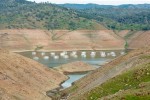All the documents that are needed to support the claim and the place or the government functionary who will provide them with those documents if they happen to be a part of the official government record or some record that the government has access to, should also be enumerated in detail in such guides. This guide should enumerate step-by-step procedure which will lead the claimant to filing his claim successfully to the FRC.
Once a claim is initiated, its receipt should be acknowledged by the GS/FRC so that the same can be tracked later on. All such data should be put in public space and information relating to the processing of claim should be accessible like any public record. The GS is empowered to verify the claim. We also need to ensure that the GS is competent to do this exercise. The GS or the FRC should be extended all the help that is needed and that the state machinery is capable of providing and the same should be made mandatory in the rules of FRA. GS or the FRC needs expertise and access to historical record or data, if any, in the actual process of identifying the forest land in relation to which an IFR or CFRt has been filed, verify the claim by using traditional and innovative technological methods, map the area, and then consolidate all the claims in its jurisdiction.
The Saxena Committee report has also acknowledged that application of spatial technologies {including remote sensing (RS), global positions systems (GPS) and geographic information systems (GIS)} have the potential to help in rapid delineation of boundaries, immutable positional information, and objective determination of the physical status of claimed lands, provided skills are built, transparency is ensured and safeguards are followed. Several states have utilized GPS technology for plot delineation. Only one state (Maharashtra) has used the full suite of technologies (RS+GIS+GPS) for all three purposes in a relatively transparent manner. This successful model should be followed and replicated throughout the country.
Once the claims are verified a resolution to this effect is passed and sent for approval to the Sub Division Level Committee (SDLC). SLDC examines the resolution and makes a record of forest rights which is then sent for approval to the District Level Committee (DLC). There are checks and balances provided for in the Act itself. Any person, who is aggrieved of any action or inaction of the GS/FRC, SLDC, DLC, can approach the appropriate forum for redressal within a given time-frame. To ensure that the intended people do avail of this redressal system, again we have to ensure that a system is in place to track the fate of any claim that has been filed, and the people affected are kept informed of its status at all times. The responsibility has to be fixed at some government level to ensure that the claimants are kept informed of the progress and the fates of the claims they have filed.
After the verification is successfully completed, the right is then vested. There should be a record of such forests rights which should be accessible to all at all time.
State level monitoring committees are almost non-existent and non-functional. They include high-level functionaries of the state administration and are supposed to send regular reports to the nodal ministry. Unless effective monitoring is ensured by some accountability or financial punitive measure, it seems like a futile exercise.
To ensure successful implementation of FRA and to reach maximum intended beneficiaries, the nodal ministry MOTA has its work cut out. They have to get out of their current mind-set of doling out grants, scholarships and freebies, and rise to the occasion to help these STs and OTFDs get their rights, which has been long overdue. MOTA will also have to win a psychological battle with the Forest Department.
The Forest Department needs to be reoriented and retrained to make it take on the critical role it will have to play in the overall forest management. Without their active and willing support, this transition in management of forests, from being only state-centric to people-oriented, where along with conservation and protection peoples’ rights are also looked at with same respect and urgency, will not be possible. Without a dramatic change in the mind-set of the forest bureaucracy, where they have to rid themselves off the landlordish attitude towards the forests and an exclusionist conservation approach, FRA would never be able to achieve its key objectives. Forest bureaucracy has to be convinced that the people residing in the forest for generations and dependent upon its resources for sustenance are also an integral part of the ecosystem they live in. To ensure sustainable management of forests, they have to learn to collaborate with the ST and OTFD whose very existence depends upon the health of these forests. As wildlife is inseparable from forests, so are these ST and OTFD, and a fine balance has to be maintained between our wildlife, forests and the indigenous people. They all have to coexist and flourish and give way to each other depending upon whose need is bigger in the larger national interest, which is a key deliverable of FRA.
The Ministry of Environment and Forests (MoEF) by its recent conditional approval to POSCO[5] has violated its own July 30, 2009 order, by which MoEF had directed all state governments that no permission for forest diversion would be granted unless the state government submitted evidence that the process of recognition of rights in the concerned forest area had been completed under the FRA, and that particular evidence of the recognition of primitive tribal groups (PTG) and community forest resource rights and Gram Sabha resolutions giving informed community consent must be attached[6]. Though this is a case of MoEF overstepping its jurisdiction, as any order regarding FRA should have come from MOTA, nonetheless this order had enabled communities to prevent diversion of forest land for a large investment project in Orissa for mining bauxite in Niyamgiri Hills by Vedanta Alumina Ltd.[7]
By granting conditional approval to POSCO, despite its own expert committee’s adverse findings, is beyond comprehension and smacks of existence of some extraneous circumstances. This looks like a classic case of the fence eating the crop. The GoI needs to come clean on this and has to send clear signals as to its commitment to successful implementation of FRA. The government flip-flop on POSCO has not done any good to FRA in general.
Notes:
[1] The FRA not only provides tribals and forest dwellers traditional rights to land and resources but also recognizes community rights over village commons or grazing land. Historically, tribal communities hold land as often in the collective as they do in their individual capacity. The forest land and resources can be used for non-forest purposes only after the affected forest dwellers have been resettled in ‘green areas’.
Any project proposed on forest land has to obtain a mandatory forest clearance from the Union government. If the land has to be used for non-forest purposes, the proposal makes it way from the gram sabha to the divisional forest officer (DFO) to the state conservator of forests to the state’s principal chief conservator of forests. It is then forwarded to the Union government with the opinion of the state’s forest secretary.











